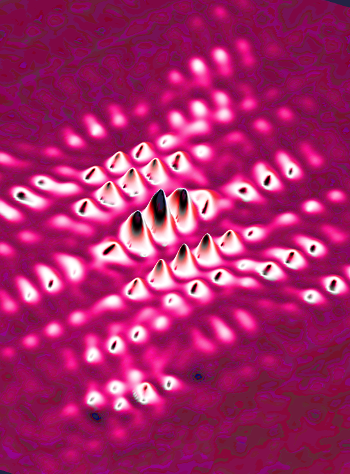Big boost for quantum control
 Australian researchers say they have solved the big problem of how to control millions of qubits in a quantum computer.
Australian researchers say they have solved the big problem of how to control millions of qubits in a quantum computer.
Engineers from UNSW Sydney say their new technique is capable of controlling spin qubits – the basic units of information in a silicon quantum processor.
Until now, quantum computer engineers and scientists have been using proof-of-concept quantum processors that can control only a handful of qubits. But the Sydney team says their breakthrough provides ‘the missing jigsaw piece’ in the quantum computer architecture to control the millions of qubits needed for complex calculations.
“Up until this point, controlling electron spin qubits relied on us delivering microwave magnetic fields by putting a current through a wire right beside the qubit,” says researcher Dr Jarryd Pla.
“This poses some real challenges if we want to scale up to the millions of qubits that a quantum computer will need to solve globally significant problems, such as the design of new vaccines.
“First off, the magnetic fields drop off really quickly with distance, so we can only control those qubits closest to the wire. That means we would need to add more and more wires as we brought in more and more qubits, which would take up a lot of real estate on the chip.”
Since the chip must operate at freezing cold temperatures, below -270°C, Dr Pla says introducing more wires would generate way too much heat in the chip, interfering with the reliability of the qubits.
“So we come back to only being able to control a few qubits with this wire technique,” he said.
The solution was to completely reimagine the silicon chip structure.
Rather than having thousands of control wires on a thumbnail-sized silicon chip containing millions of qubits, the team looked at ways to generate a magnetic field from above the chip to manipulate all of the qubits simultaneously.
This idea of controlling all qubits simultaneously was first posited by quantum computing scientists back in the 1990s, but so far, nobody had worked out a practical way to do this – until now.
“First we removed the wire next to the qubits and then came up with a novel way to deliver microwave-frequency magnetic control fields across the entire system. So in principle, we could deliver control fields to up to four million qubits,” says Dr Pla.
Dr Pla and the team introduced a new component directly above the silicon chip – a crystal prism called a dielectric resonator. When microwaves are directed into the resonator, it focuses the wavelength of the microwaves down to a much smaller size.
“The dielectric resonator shrinks the wavelength down below one millimetre, so we now have a very efficient conversion of microwave power into the magnetic field that controls the spins of all the qubits,” Dr Pla says.
“There are two key innovations here. The first is that we don’t have to put in a lot of power to get a strong driving field for the qubits, which crucially means we don’t generate much heat. The second is that the field is very uniform across the chip, so that millions of qubits all experience the same level of control.”
The researchers say their breakthrough brings the age of quantum computing closer, with computers using thousands of qubits now potentially less than a decade away.
Beyond that, they are expected to bring new firepower to solving global challenges and developing new technologies because of their ability to model extraordinarily complex systems.
The team plans to use the new technology to simplify the design of near-term silicon quantum processors.
“Removing the on-chip control wire frees up space for additional qubits and all of the other electronics required to build a quantum processor. It makes the task of going to the next step of producing devices with some tens of qubits much simpler,” says engineering researcher Professor Andrew Dzurak.
“While there are engineering challenges to resolve before processors with a million qubits can be made, we are excited by the fact that we now have a way to control them,” says Dr Pla.
The full study is accessible here.







 Print
Print